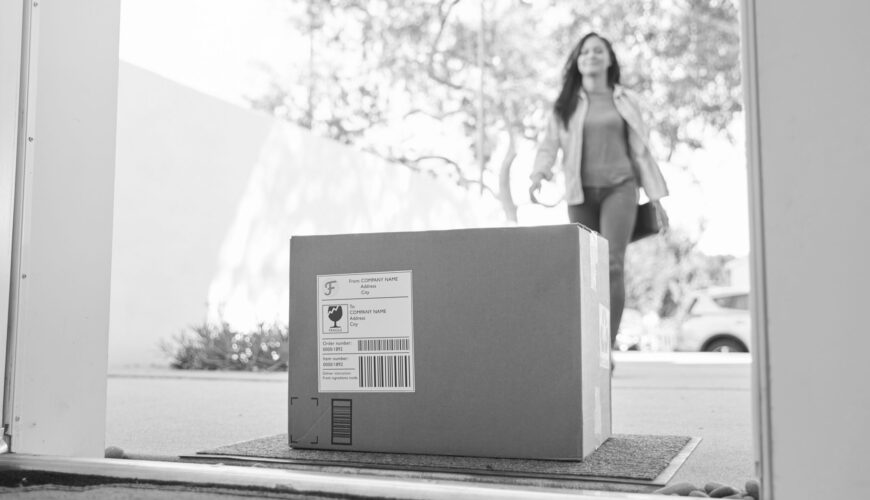Shipping in manufacturer’s packaging and drop-shipping have the power to reshape the industry’s approach to efficiency and environmental responsibility. E-commerce fulfillment organizations are embracing a more sustainable and cost-effective approach. By finding innovative ways to streamline operations and reduce their ecological footprint, e-commerce retailers are reaping the benefits of efficiency and financial savings. This article explores the powerful combination of shipping products in their original manufacturer’s packaging and adopting drop-shipping practices. These strategies reduce packaging waste and shipping costs and leverage vendors’ capabilities to drive efficiency and create a more sustainable e-commerce ecosystem while saving money.
Shipping in Manufacturer’s Packaging: A Green Approach
Shipping products directly in their manufacturer’s packaging is a decisive step towards environmental responsibility. Retailers can significantly reduce packaging waste by skipping the extra layer of shipping cartons and dunnage materials. This reduction directly impacts the environment, as it curbs the demand for plastic and paper materials and minimizes waste generation. In tandem, e-commerce retailers convey their dedication to sustainability, resonating with conscious consumers who prioritize eco-friendly practices. The added benefit of reduced cube and weight translates into reduced freight (parcel) costs. But this is not a journey that retailers can embark on alone. Collaboration with manufacturers to ensure that the product packaging is “label-ready” (capable of protecting the contents in parcel transit without additional overwrap, dunnage, or additional boxing) is a crucial step in these initiatives, emphasizing the importance of collective action in creating a more sustainable e-commerce ecosystem.
Drop-Shipping: A Win-Win Solution
Drop-shipping, where retailers partner with manufacturers or suppliers to fulfill orders directly to customers, has gained momentum in recent years. By leveraging the fulfillment capabilities of vendors, e-commerce retailers can reduce inventory carrying costs and streamline their supply chain. Drop-shipping empowers retailers to offer a broader range of products without investing in large inventory stocks. This leaner approach reduces the risk of overstocking and minimizes the environmental impact associated with excess production.
Efficiency Amplified
When e-commerce retailers embrace drop-shipping directly from manufacturers, they capitalize on the efficiency of well-established supply chains. Many manufacturers are experts in producing and delivering their products, often possessing optimized logistics networks. By tapping into these networks, retailers can minimize delivery times, reduce transportation distances, and optimize last-mile deliveries. This synergy translates into efficient operations that benefit the retailer’s bottom line and the planet.
Mitigating Inventory-Related Waste
Traditional e-commerce practices involve warehousing, which can lead to product obsolescence and disposal of unsold inventory. With drop-shipping, retailers can avoid these issues altogether. Products are dispatched to customers as orders are received, reducing the likelihood of inventory waste. Additionally, this strategy enables retailers to test new products or variations without committing to large quantities, minimizing the risk of being left with unsold items.
Lowering Carbon Footprint
Drop-shipping, which involves shipping products directly from manufacturers, also contributes to reducing the carbon footprint of e-commerce operations. By leveraging existing distribution networks, products travel shorter distances and bypass the need for intermediaries like warehouses. This results in fewer emissions from transportation and reduces the energy consumed in storage facilities, contributing to a more sustainable supply chain.
Customer-Centric Approach
The combination of manufacturer’s packaging and drop-shipping enhances the customer experience in various ways. Customers receive products in their original packaging, showcasing authenticity and transparency. The efficient delivery times enabled by drop-shipping further improve customer satisfaction. Moreover, retailers can offer a broader range of products without the need to maintain a massive inventory, catering to diverse consumer preferences.
Challenges and Considerations
While the benefits are substantial, e-commerce retailers must address potential challenges when implementing manufacturer’s packaging and drop-shipping strategies. Coordinating with manufacturers, effective communication, and quality control become critical to ensure consistent delivery and product quality. Retailers must also carefully select vendors and partners who share their commitment to sustainability.
In the dynamic landscape of e-commerce, innovation extends beyond the digital realm and permeates the physical supply chain. The symbiotic relationship between shipping in manufacturer’s packaging and drop-shipping has the power to reshape the industry’s approach to efficiency and environmental responsibility. These strategies reduce packaging waste, lower shipping costs, and leverage vendors’ capabilities, all while minimizing the carbon footprint of e-commerce operations. By embracing this transformative approach, e-commerce retailers demonstrate their dedication to sustainable practices while meeting customer expectations for seamless, eco-friendly shopping experiences. As the industry evolves, these strategies pave the way for a greener, more efficient e-commerce future.


